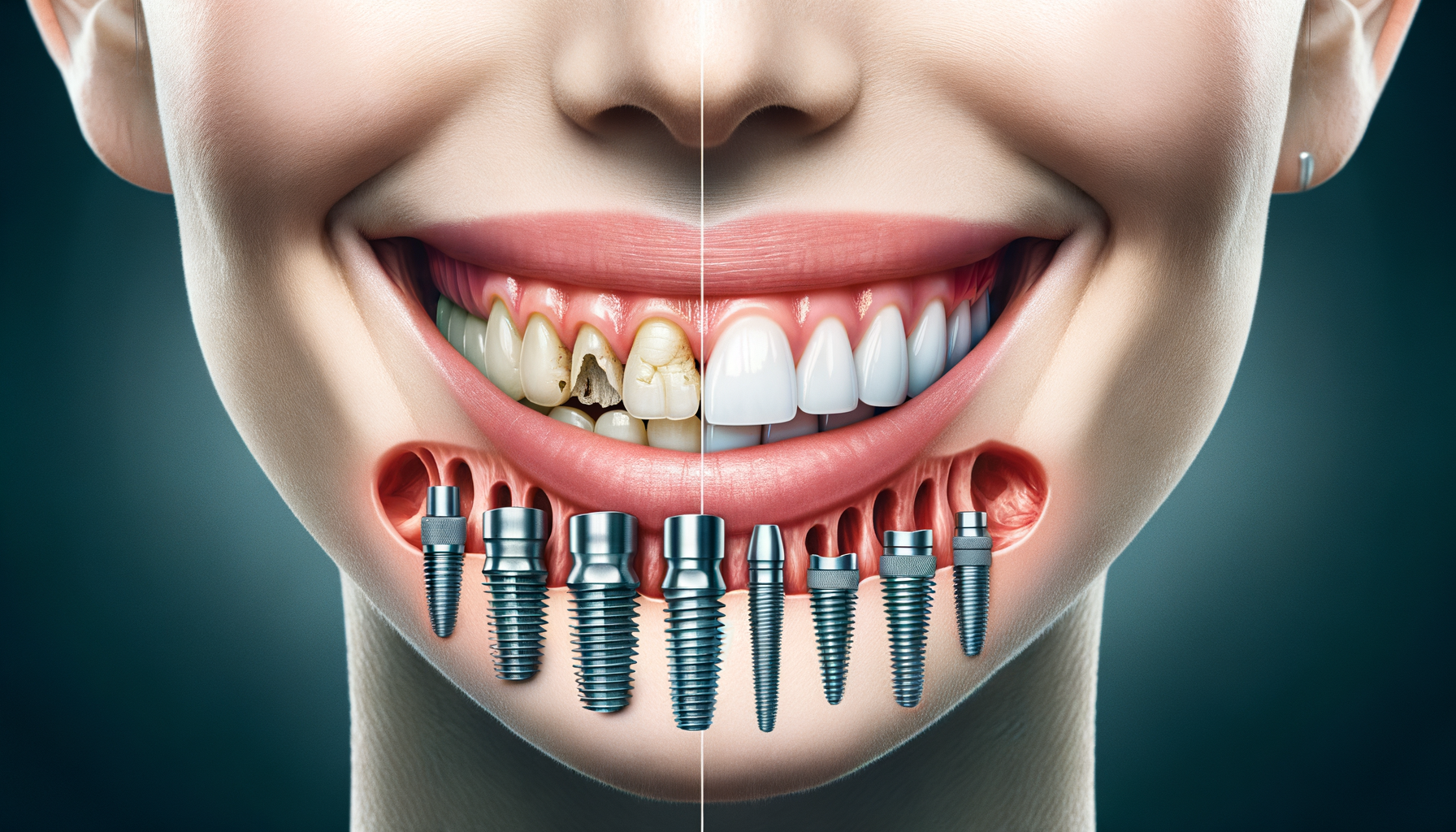Introduction to Dental Implants
In a world where a confident smile can open doors and create lasting impressions, dental implants emerge as a remarkable solution for those looking to reclaim their oral aesthetics and functionality. Dental implants are more than just a cosmetic enhancement; they represent a fusion of technology and healthcare that offers a durable and natural-looking option to improve your smile. With the ability to support oral comfort, they are designed to help with daily activities like eating and speaking more comfortably, thus enhancing overall quality of life.
For individuals missing one or more teeth, dental implants provide a sturdy foundation for replacement teeth that look, feel, and function like natural teeth. This article delves into the intricacies of dental implants, exploring their benefits, the procedure involved, and how they compare to other tooth replacement options, offering you a comprehensive understanding of why they might be the right choice for you.
Understanding the Dental Implant Procedure
The process of getting dental implants is a meticulous one, designed to ensure a secure and lasting fit. It typically involves several steps, starting with a thorough evaluation by a dental professional to determine the suitability of implants for the patient. This initial assessment includes imaging tests to evaluate the jawbone’s condition and plan the implant placement.
Once deemed suitable, the procedure begins with the surgical placement of a titanium post into the jawbone, which acts as a root for the new tooth. This post is biocompatible, meaning it is designed to integrate with the bone through a process called osseointegration. This stage is crucial as it ensures the stability of the implant, akin to the roots of natural teeth.
After the post has successfully integrated, a connector, known as an abutment, is attached to the post. This serves as the base for the artificial tooth or crown, which is custom-made to match the color, shape, and size of the patient’s natural teeth, ensuring a seamless blend. The entire process can take several months, allowing time for healing and integration, but the result is a permanent solution that can last a lifetime with proper care.
Benefits of Choosing Dental Implants
Dental implants offer a multitude of benefits that extend beyond the aesthetic appeal. One of the primary advantages is their ability to preserve jawbone health. Unlike dentures or bridges, implants provide the stimulation needed to prevent bone loss, maintaining the facial structure and preventing the sunken appearance often associated with missing teeth.
Moreover, dental implants enhance oral functionality. They eliminate the discomfort and inconvenience of removable dentures, allowing individuals to eat, speak, and smile with confidence. The stability of implants means there is no risk of slipping or shifting, which can be a common issue with other types of tooth replacements.
Additionally, dental implants do not require altering adjacent teeth, as is necessary with dental bridges. This preserves the integrity of surrounding teeth, promoting overall oral health. The durability of implants also means they are a cost-effective solution in the long run, reducing the need for frequent replacements or adjustments.
Comparing Dental Implants to Other Tooth Replacement Options
When considering tooth replacement options, it’s essential to weigh the pros and cons of each to make an informed decision. Dental implants, as previously discussed, offer a permanent and natural-looking solution. However, other options like dentures and bridges also have their place depending on individual needs and circumstances.
Dentures are removable appliances that replace missing teeth and surrounding tissue. They are generally more affordable upfront compared to implants and can be a suitable option for those with extensive tooth loss. However, they may require regular adjustments and can sometimes cause discomfort or affect speech and eating.
Dental bridges, on the other hand, are fixed appliances that fill the gap created by one or more missing teeth. They are anchored onto adjacent teeth, which need to be filed down to support the bridge. While bridges are more stable than dentures, they do not offer the same bone-preserving benefits as implants and may compromise the health of surrounding teeth over time.
Ultimately, the choice between these options depends on factors such as the number of missing teeth, the health of the jawbone, budget, and personal preference. Consulting with a dental professional can provide valuable insights tailored to individual needs.
Conclusion: Is It Time for Dental Implants?
For those tired of hiding their smile due to missing teeth, dental implants present an outstanding solution that combines functionality, durability, and aesthetics. They not only restore the natural appearance of teeth but also contribute to oral health and overall well-being. With their ability to support daily activities like eating and speaking more comfortably, dental implants can significantly enhance the quality of life.
While the decision to undergo dental implant surgery is a personal one, informed by individual circumstances and preferences, the benefits they offer make them a compelling choice for many. If you’re considering dental implants, consulting with a qualified dental professional can help determine if they are the right option for you, paving the way towards a confident and radiant smile.




Leave a Reply